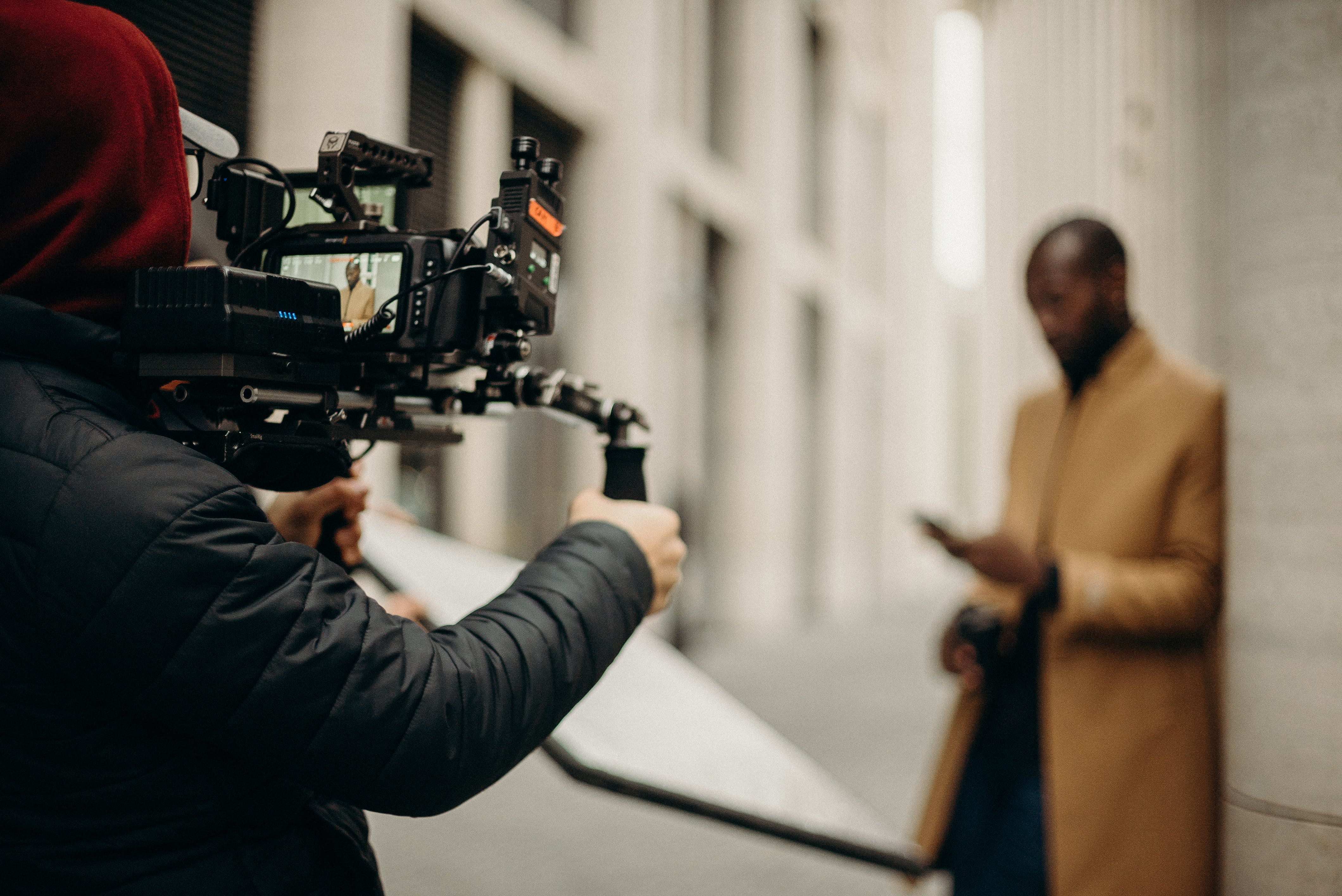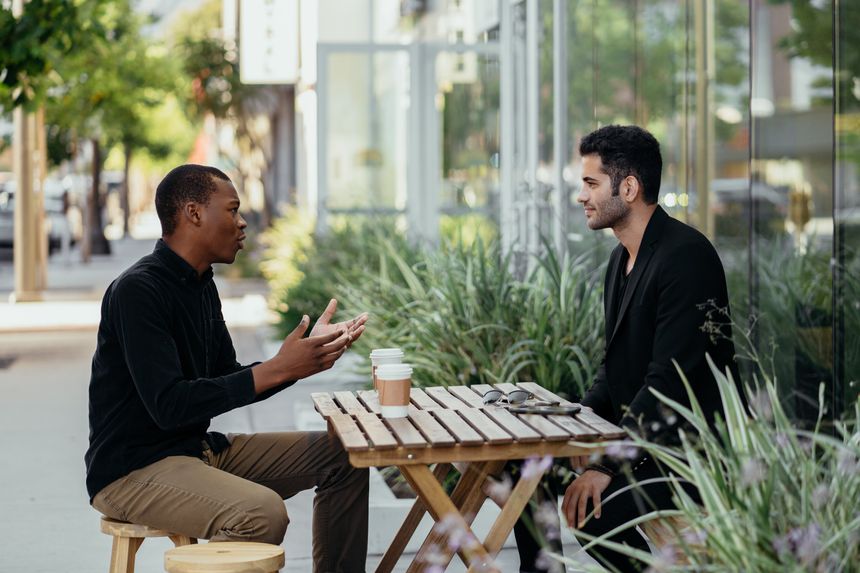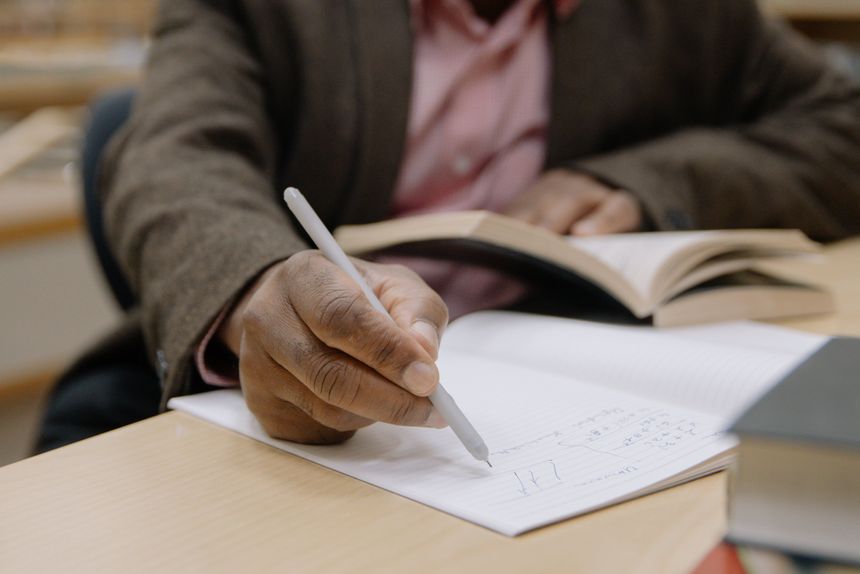Journalistic interview: How to interview someone for an article

The journalistic interview is the backbone of quality reporting – a dance of wit and words where truths are unearthed, stories are woven, and the voiceless find a megaphone.
These interviews can shift public perspectives, influence opinions, and occasionally, even reshape history.
Learn more about the art of journalistic interviews in this article.
What is a journalistic interview?
A journalistic interview is a primary tool in a reporter's arsenal, crucial across all media landscapes, from the rush of breaking news to the in-depth explorations of long-form features.
The impact of journalistic interviews stretches from the pages of Google News to the insights shared on ABC Radio National's Life Matters, shaping modern journalism and the public consciousness.
Types of journalistic interviews
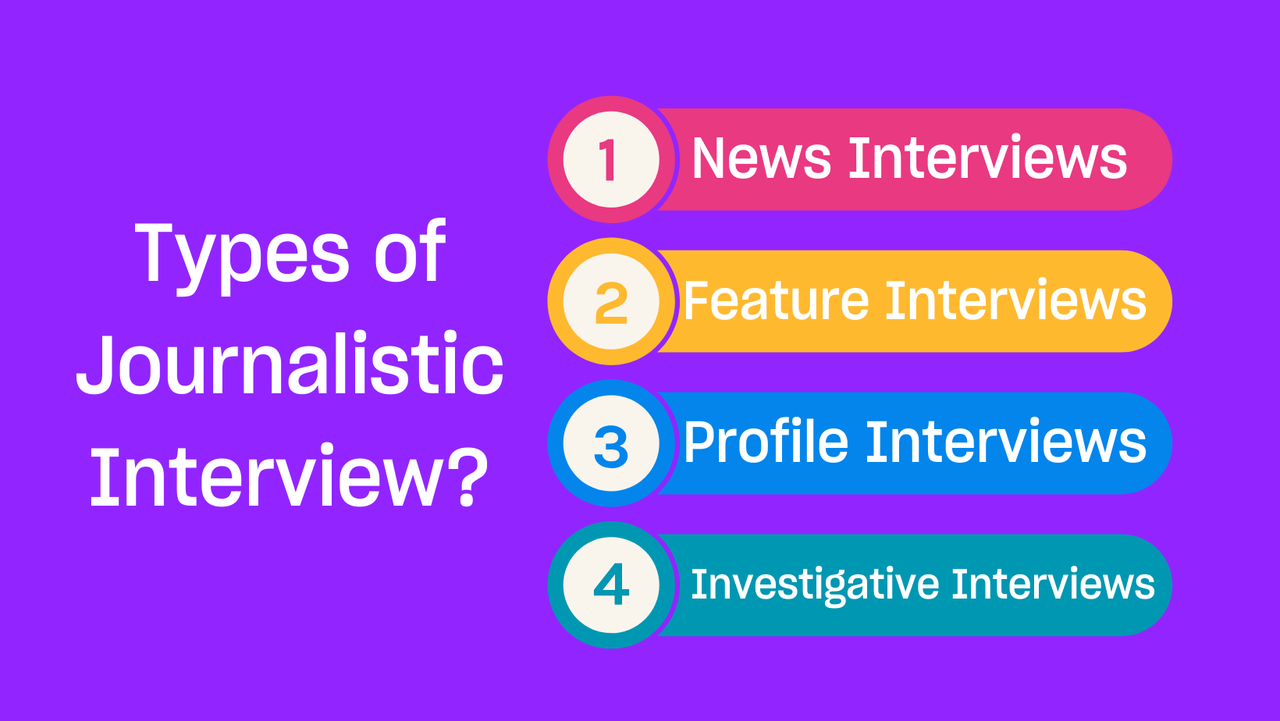
From the presidential news conferences to the reflective charm of a profile piece, journalistic interviews take many forms.
Let’s talk about a few of them:
- News interviews: Quick, direct, often seeking an acceptable response to pressing public issues.
- Feature interviews: These take a narrative detour, embrace multimedia elements, and often advance to sources for a layered story.
- Profile interviews: A canvas for personal details, painting a subject with both basic details and authoritative knowledge.
- Investigative interviews: Here, hard-hitting questions meet adversarial elements, digging beneath the surface for hidden truths.
Each carries its tune and requires a combination of excellent communication skills and background questions to compose the final high-quality content.
The journalist's role

The journalist is the master, upholding their integrity by balancing adversarial questions with ethical conduct.
To name a few, their responsibilities include:
- Upholding neutrality and avoiding aloofness of government officials.
- Ensuring fact-checking triumphs over evasive responses.
- Staff writers and assistant editors alike must maintain a standard that reflects the ethos of their School of Journalism and Communication.
Interview objectives
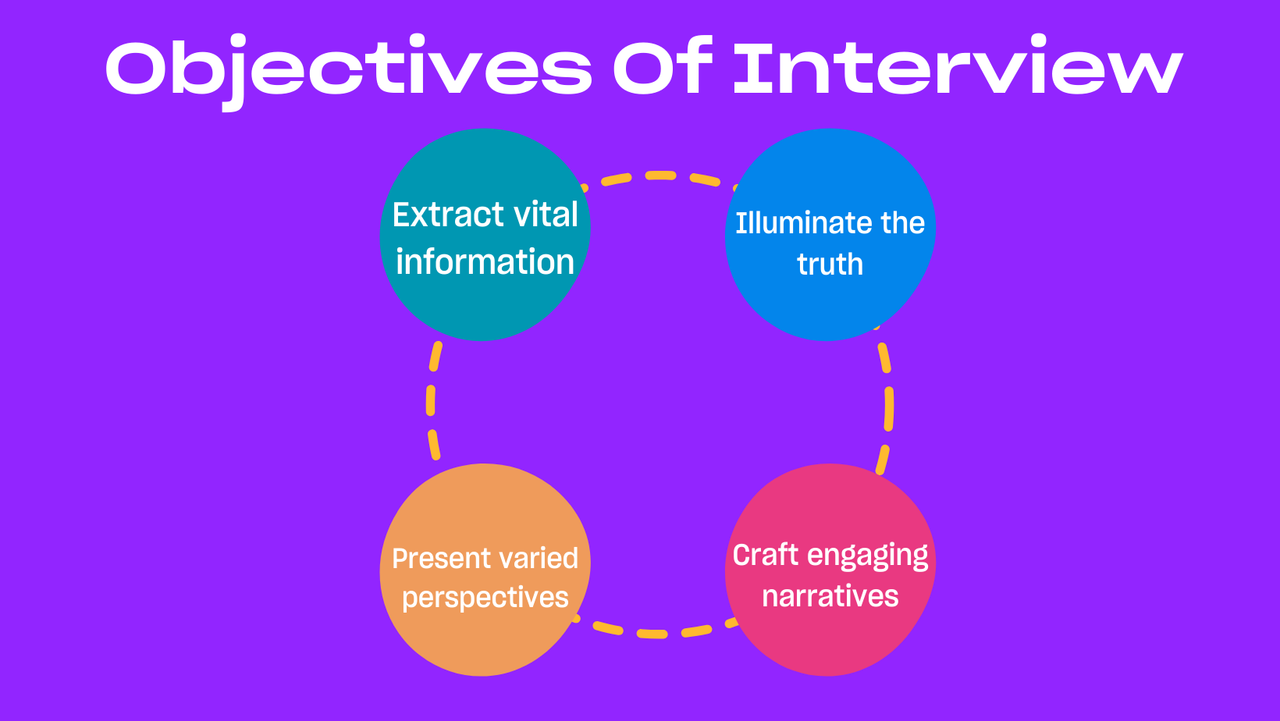
A journalist's quarry can range from the quest for an adversarial question to content that challenges norms to compiling a list of questions that bridges narratives.
Unearthing valuable insights:
Imagine being a journalist uncovering a scandal or a heartwarming story; each piece of information is a key that, when pieced together, creates a picture of truth and understanding. This process of discovery enriches your narrative, filling it with insights that captivate and inform your audience.
Highlighting the truth through questions:
Consider the impact of well-crafted interview questions, similar to Oprah Winfrey’s interview with Lance Armstrong. The right series of questions can reveal hidden truths, much like a lighthouse guiding ships through fog. As a journalist, your aim is to follow this – to ask questions using different narratives, bringing the truth for your audience.
Presenting diverse perspectives:
Each journalistic interview adds a unique dimension to your story. Just as every individual voice in projects like the "1619 Project" contributed to a richer historical narrative, your interviews can bring together diverse perspectives to form a more inclusive and compelling narrative.
Crafting compelling narratives:
A journalist is both a craftsman and a storyteller. They mould a narrative with the raw material of gathered information. Every tough question asked shapes the contours of your story, ensuring the finished article is not only informative but also engaging to read.
As journalists navigate these objectives, they remain mindful of the modern journalism landscape, where content and engagement go hand in hand. With every interview, they don't just talk to a source; they engage in a lively conversation, where every step and question is carefully choreographed to contribute to the ultimate revelation and narrative for public consumption.
How to interview someone for an article: Key interview techniques
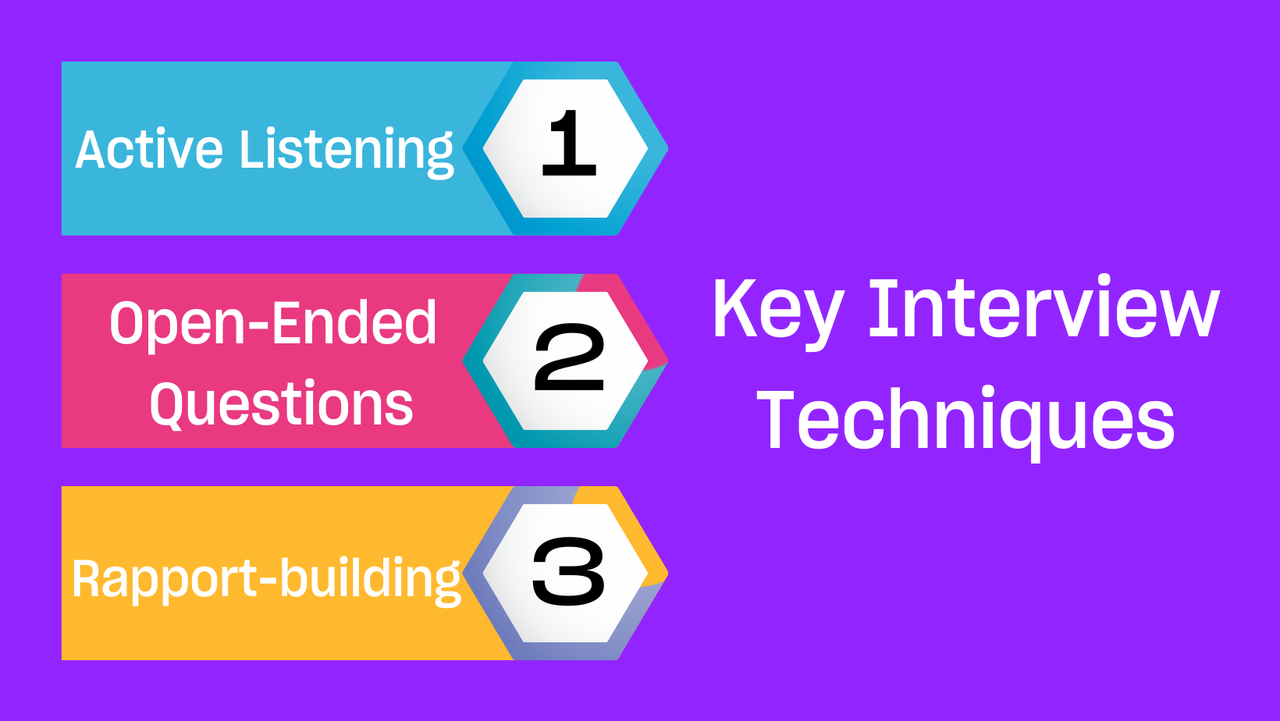
Locking in a great interview is an art form. Some quick brush strokes include:
- Active listening: Tune in to the facial expression and the unspoken word.
- Open-ended questions: These are the keys that unlock additional questions and prevent a parade of yes or no.
- Building rapport: A touch of empathy goes a long way in opening up a source.
Dig deeper into how to interview someone for an article with our detailed guides.
How to conduct a successful journalistic interview
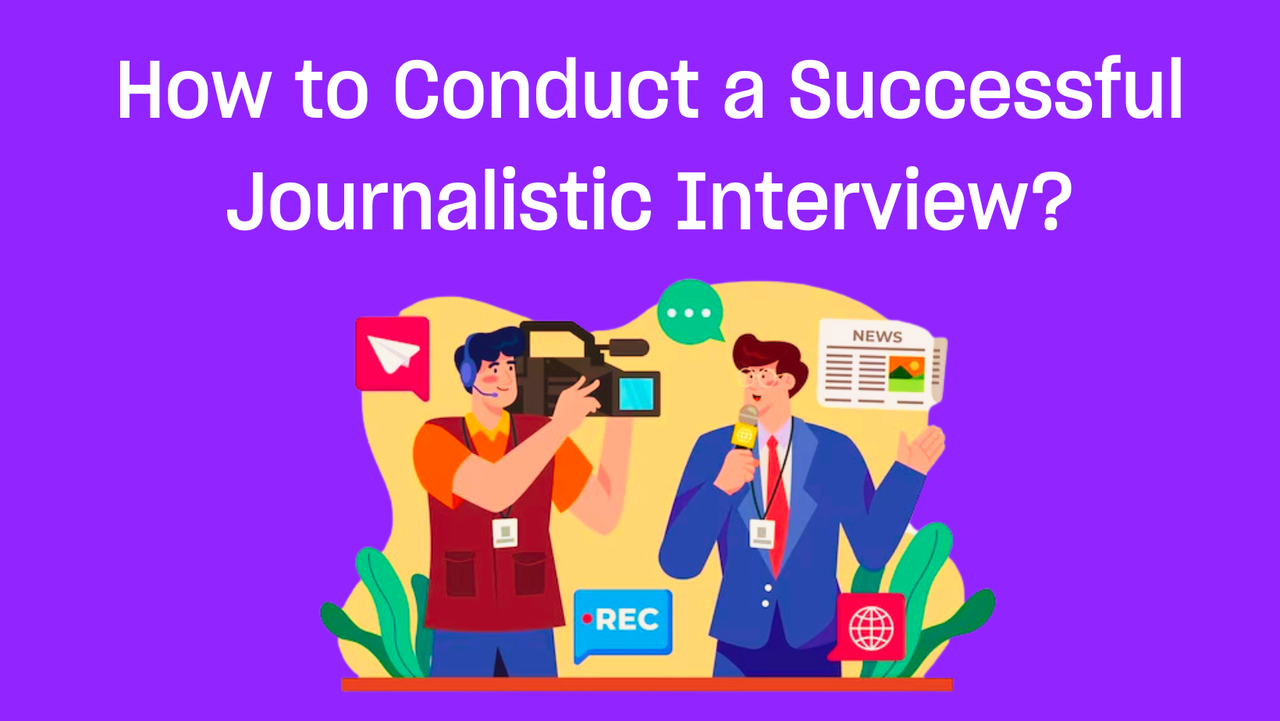
Setting the stage for an insightful interview involves a three-act structure:
- A warm greeting, a brief news story context, swap a business card.
- This is where tough questions and follow-up questions play leading roles.
- Summarise, thank you for the finished article and ask for contact details for any additional questions.
Recording and transcription in journalistic interviews
Capturing every syllable accurately is not just good practice; it's a basic knowledge necessity.
Enter the tape recorder, or its modern equivalent: transcription tools like Good Tape.
Good Tape is your trusty sidekick, ensuring every difficult question and insightful answer is preserved for public officials and soft skill analysts alike.
Getting started with Good Tape: The transcribing tool for journalists
Each conversation you capture is more than just an exchange – it’s an opportunity to craft hard-hitting questions into stories that resonate.
Whether you're a veteran of journalism or a fresh face at a School of Journalism and Communication, Good Tape provides the edge you need to transform a good interview into a great one.
Embarking on the transcription journey with Good Tape is simple.
Here's how to transcribe your interviews using Good Tape:
1. Upload your file: Upload the file you need to transcribe. It's the first step in getting your content converted.

2. Select your language: Choose the language spoken in the file. Good Tape accommodates a wide array of languages. Still, if you’re unsure, the ‘auto-detect’ feature can identify it.

3. Click on 'Transcribe': Click the ‘Transcribe’ button to begin transcribing your interview.
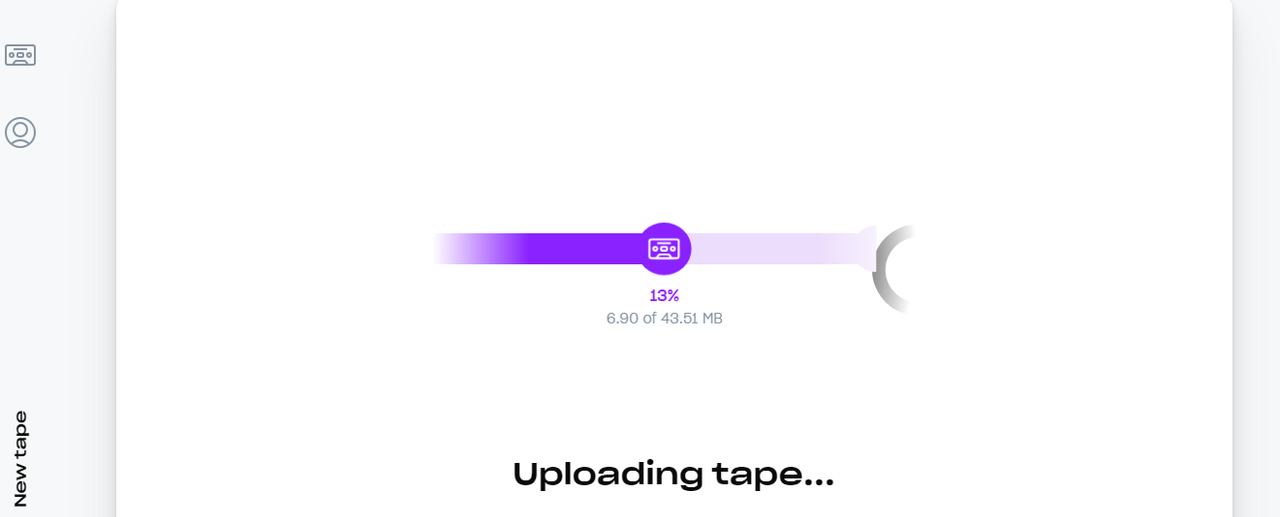
4. It will take up to 60 minutes: For Casual Users (our Free Plan), Good Tape can transcribe a maximum of 30 minutes in a single go. With our paid plans, you get unlimited length.

5. Get a notification: Once your transcription is ready, Good Tape will alert you via e-mail. This message will include a link to access and download your transcribed document.
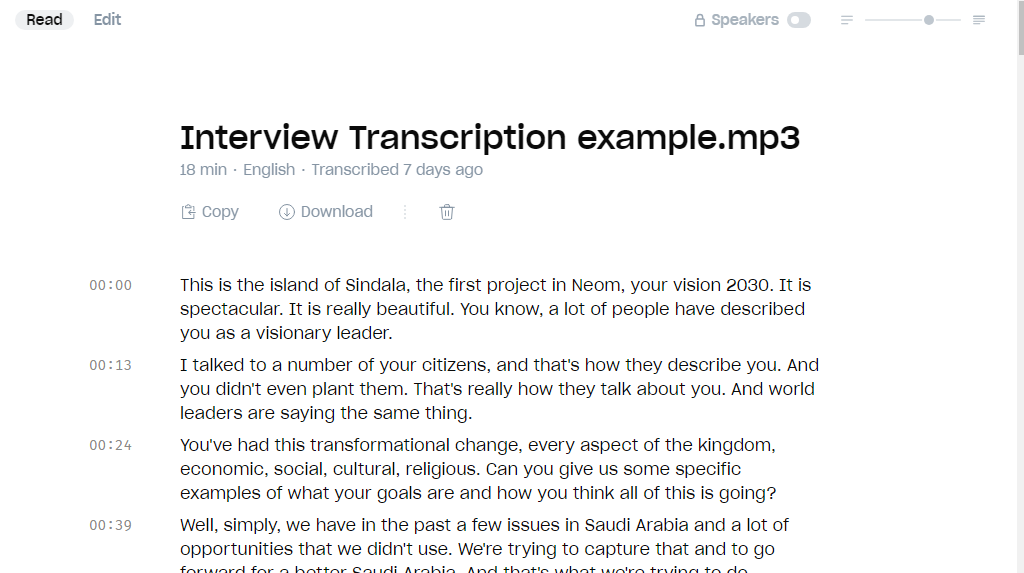
Using Good Tape ensures you don't miss adversarial elements or behavioural nuances, giving you more time to craft your narrative.
And for research workflows that demand precision? It's an ally for your work.
Embrace Good Tape's simple transcription service and ensure your interviews are prepared for public consumption with just a few clicks.
